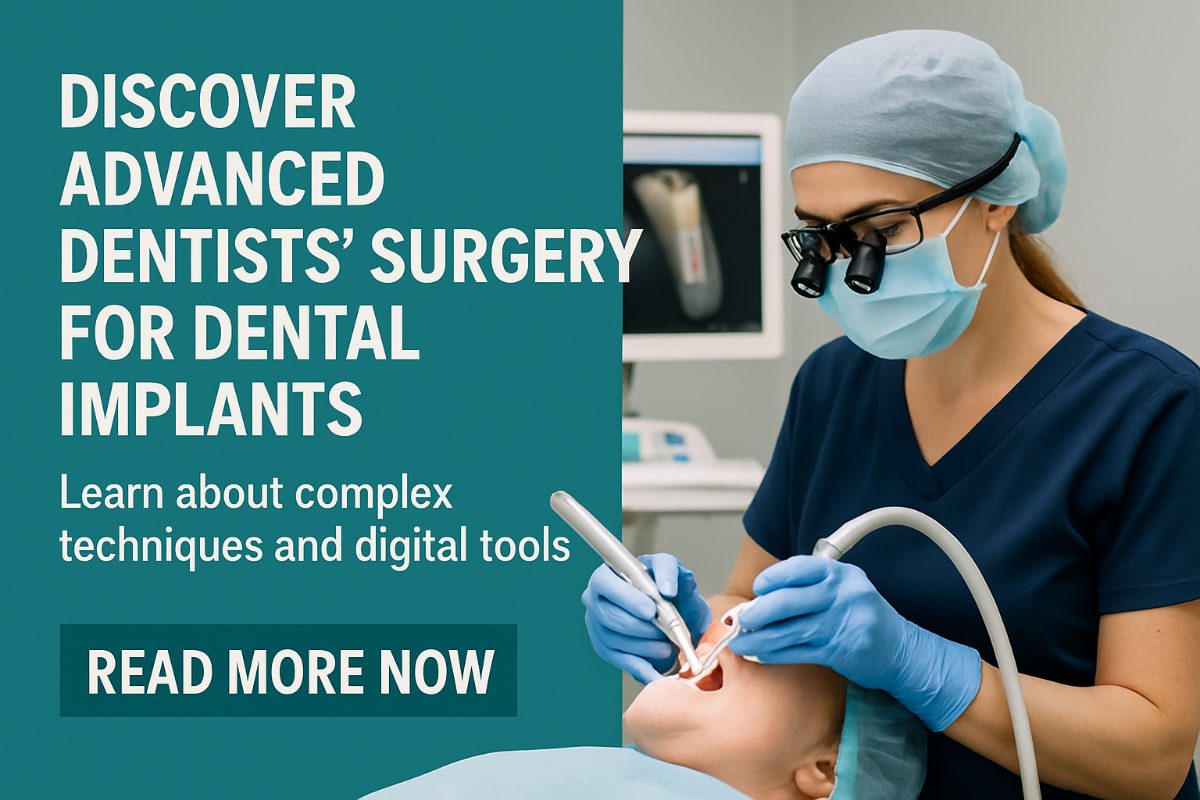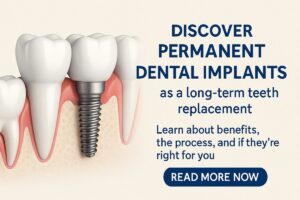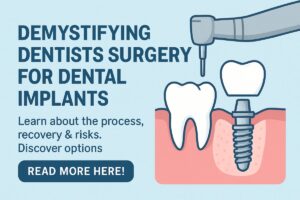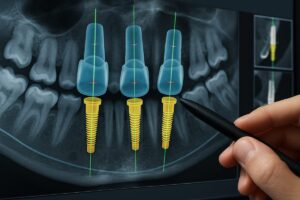This guide explains advanced dentists surgery for dental implants, who it helps, and why specialized surgical options matter. If you’ve been told you don’t have enough bone or your case is complex, this article will help you understand the surgical choices, digital tools that improve outcomes, and practical next steps for care.
What “dentists surgery” for dental implants actually involves
When we say dentists surgery for dental implants, we mean surgical procedures beyond routine implant placement. Routine implant placement replaces one or a few teeth in good bone. Advanced dentists surgery addresses complex problems like severe bone loss, full-arch replacements, prior failed grafts, or unusual anatomy that make standard implants unsafe or impossible.
Advanced surgery can include placing longer or differently angled implants, using alternative anchor points, rebuilding bone, or fitting custom subperiosteal devices. The goal is the same—stable teeth that function and look natural—but the techniques and planning are more complex.
Common reasons patients need advanced dentists surgery
Severe bone loss or long-term tooth loss
After teeth are missing for a long time, the jawbone shrinks (bone resorption). That loss can leave too little bone height or width for standard implants. Advanced dentists surgery often uses alternative implant sites or grafting techniques to provide secure support when bone volume is reduced.
Anatomical limits (sinus, jaw shape, etc.)
Some patients have low sinuses, nerves close to the planned implant site, unusual jaw shape, or prior grafts that failed. Those anatomy issues require specialized planning and surgical methods—such as avoiding the sinus, angling implants, or choosing different fixation points—to protect vital structures and achieve a stable result.
Advanced implant techniques for patients told they have “no bone”
Zygomatic implants
Zygomatic implants anchor in the cheekbone (zygoma) instead of the upper jaw. They are used when the upper jaw has severe bone loss and can allow full-arch support without bone grafting.
Pterygoid and transsinus implants
Pterygoid implants engage the back (posterior) bone near the pterygoid plate; transsinus implants use a path that crosses near the sinus to reach denser bone. Both provide posterior fixation for full-arch restorations when the normal upper jaw bone is inadequate.
Subperiosteal implants
Subperiosteal implants sit on top of the jawbone under the gum, supported by a custom metal framework. They are an option when bone height is very low and other implant approaches aren’t possible or practical.
How digital tools improve dentists surgery outcomes
Facial scanners and intraoral scanners
Facial and intraoral scanners capture precise 3D images of your face, jaw, and teeth. They speed planning, let the lab make restorations that fit well on the first try, and improve the final look and function of the implants.
Photogrammetry and a full digital All-on-X workflow
Photogrammetry records exact implant positions during surgery so technicians can design a perfect-fitting temporary or final prosthesis. A full digital All-on-X workflow reduces manual errors, shortens treatment time, and helps deliver predictable results faster.
What to expect if you travel to a specialist for surgery
Many specialists see out-of-state patients. The typical flow is predictable and patient-friendly.
- Free consultation and CT scan to evaluate your bone and plan surgery
- Meet the surgeon (often the day before surgery) to review the plan and consent
- Surgery and short recovery—patients often return home the next day
- Local referring dentist handles routine postoperative checks
- Final surgical follow-up occurs months later with the specialist for the final restoration
Why choosing a board-certified specialist matters for complex dentists surgery
Board certification shows advanced training and high case volume. For complex dentists surgery, a board-certified implant specialist has additional experience managing complications, selecting the right advanced techniques, and coordinating digital workflows—factors that can lower risk and improve long-term success.
How this practice supports complex implant patients
Dr. Michael Fioritto is one of about nine board-certified implant specialists in Ohio. The practice treats patients told they have “no bone” using zygomatic, pterygoid, transsinus, and subperiosteal implants. They use facial scanners, intraoral scanners, and photogrammetry for a fully digital workflow. The surgeon has trained many local dentists and labs on digital All-on-X techniques. Free consultations and CT scans are offered, and the team routinely treats out-of-state patients who meet the surgeon the day before surgery, return home the following day, receive local postop care with their referring dentist, and return months later for the final check.
Next steps and call to action
To get a free consultation and CT scan for advanced dentists surgery in Ohio, schedule an appointment by phone or the online form. Bring any prior dental x-rays, a list of current medications, and notes about previous dental surgeries or grafts. During the consult you’ll get a clear plan, options for treatment, and a timeline for surgery and follow-up.






